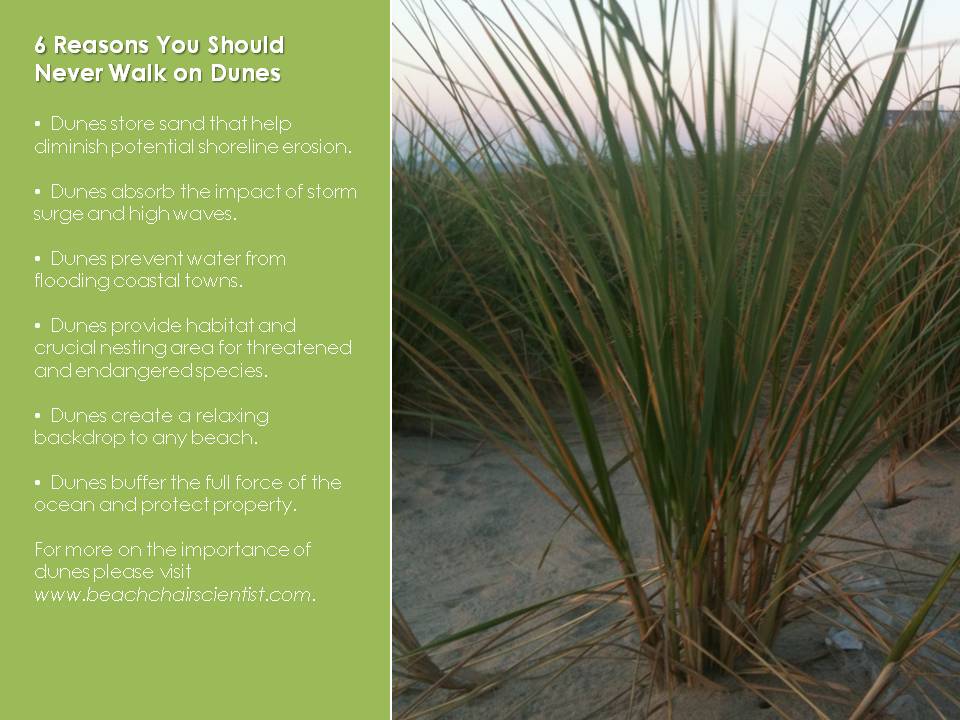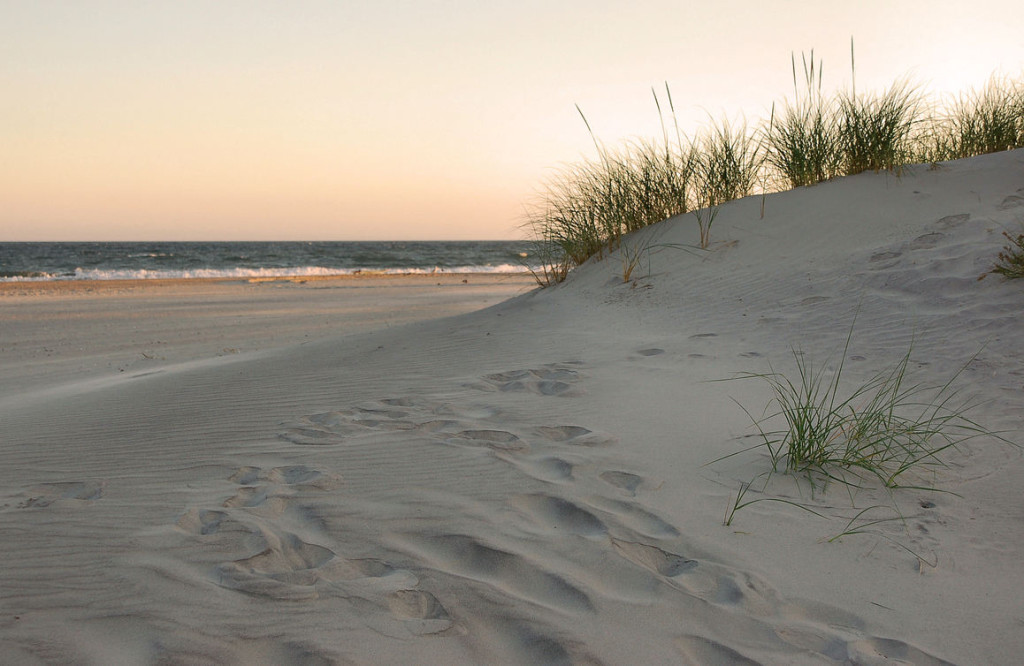In case you didn’t pick up on this via Instagram or Twitter I’ve recently relocated to Chicago. It’s a far cry from my Mid-Atlantic roots but actually much closer to lots of beautiful beaches and plenty of new inspiration. In fact, one place I cannot wait to visit is the Indiana Dunes National Lakeshore. Here’s why:
Dunes are important (and you should never walk on them!) and should be rebuilt to maintain stability after any natural disaster. I mean … we don’t want to erode the beaches away. Dunes are dynamic and lend themselves as a main cause for a beaches unique features. They’re also such an indicator of the power of the ocean and wind. But, where would they be without stabilizers such as dunes grasses?

Here’s a quick demonstration I’ve used in a high school class to illustrate 1) how wind carries materials (i.e., sand) to build dunes and 2) why we should protect grasses that stabilize dunes.
Materials: Dry, fine sand, blow dryer, twigs or branches (I have a bunch of strange fairy house trees and shrubs that make for cute miniatures), a cereal box with one side removed, eye glasses (definitely one for each student)
Prep: I create a dune without any stabilization in the center of the box. I think it’s good to make it fairly large (about six inches or so high so that something noticeable can occur.
Discussion/demo: Ask students to draw a picture of what will happen to the dune once the wind (i.e., created from the blow dryer) blows on the dune. In particular ask them what if they can predict if one side might get steeper and one side might increase its slope. I also introduce terms such as “windward” and “leeward” noting how the sand will basically blow over the leeward side of the dune. Once the demonstration is complete, and I’ve used the blow dryer on a low setting for about ten seconds about one feet away, I follow-up and ask them if the migration of the sand was the same as their prediction.
Next, I set it up again and ask them the same questions but I use the stabilizers. For the stabilizers you want to make sure that they are in firmly and won’t blow away (It’s one of those things I learned the hard way).
Outcome: The outcome should be that the students notice a difference with a dune that is stable verse one that doesn’t have vegetation. You can even mention that some dunes can be stabilized with artificial means such as rocks. Dunes that are stable can greatly improve beach erosion which is especially timely given the coastlines aren’t what they used to be. Thanks, climate change (that’s an entirely different discussion).
Note: I generally use quick introductions like this as a journal exercise to get the students thinking and warmed up. I typically ask them to break out a vocabulary section in their notes and copy down and words I might use (e.g., windward, erosion, leeward) and then set up a journal entry for the introduction to class.









What people are saying …